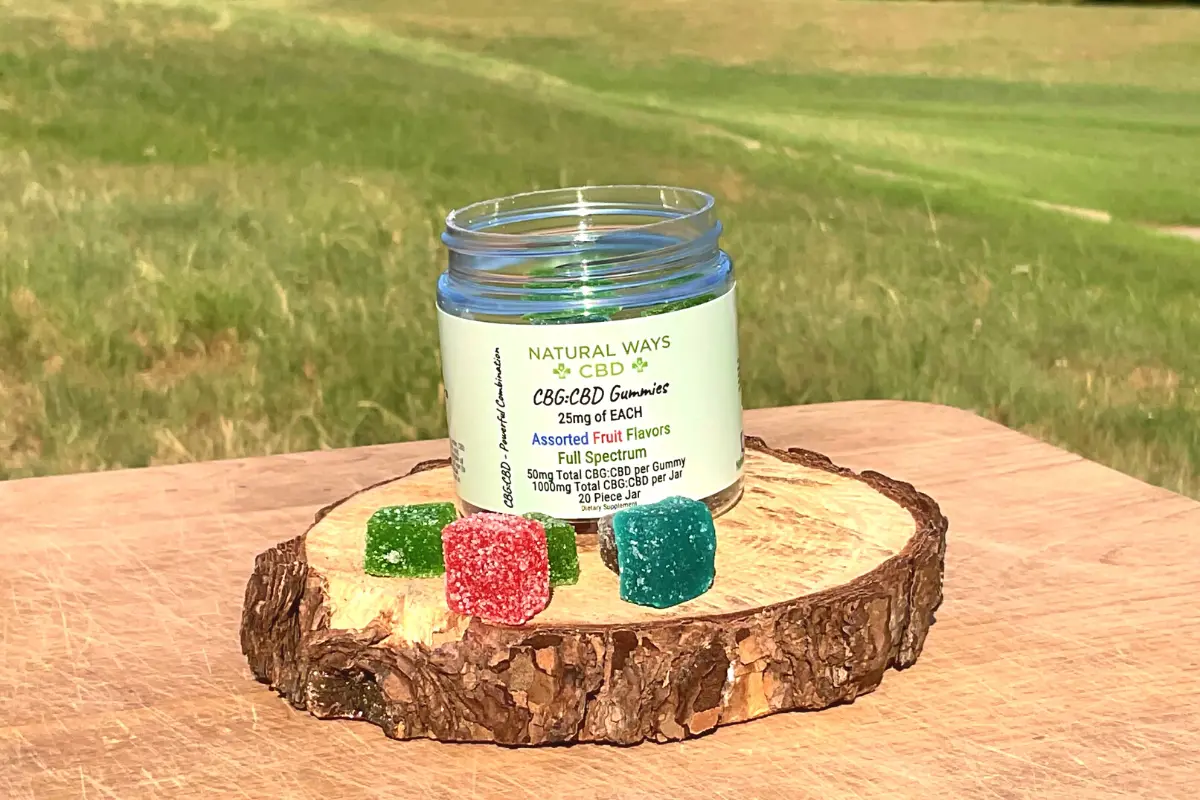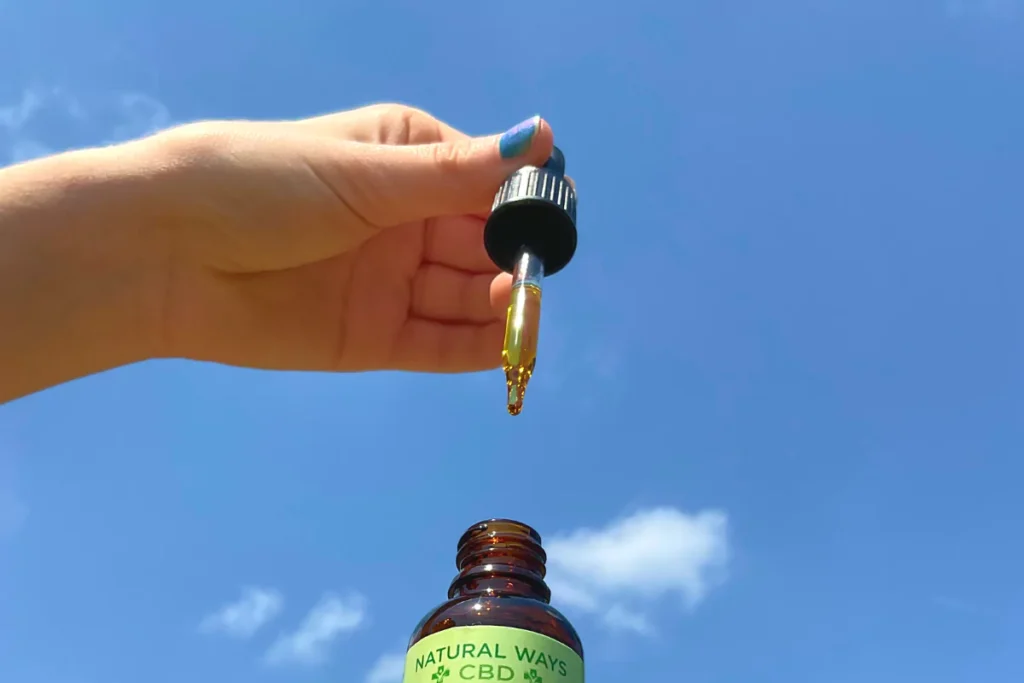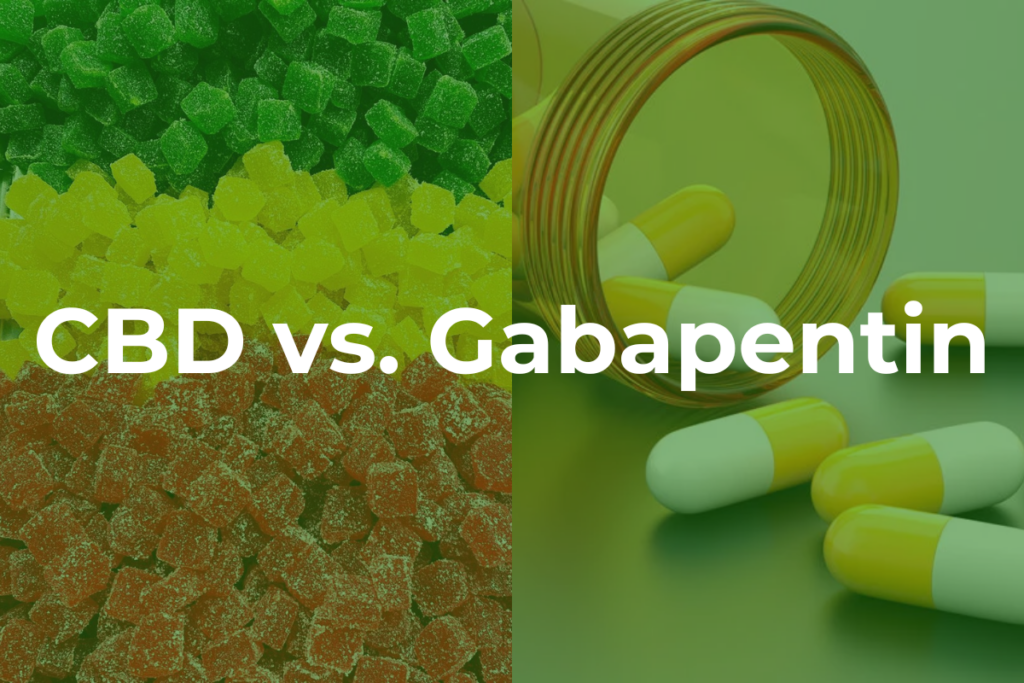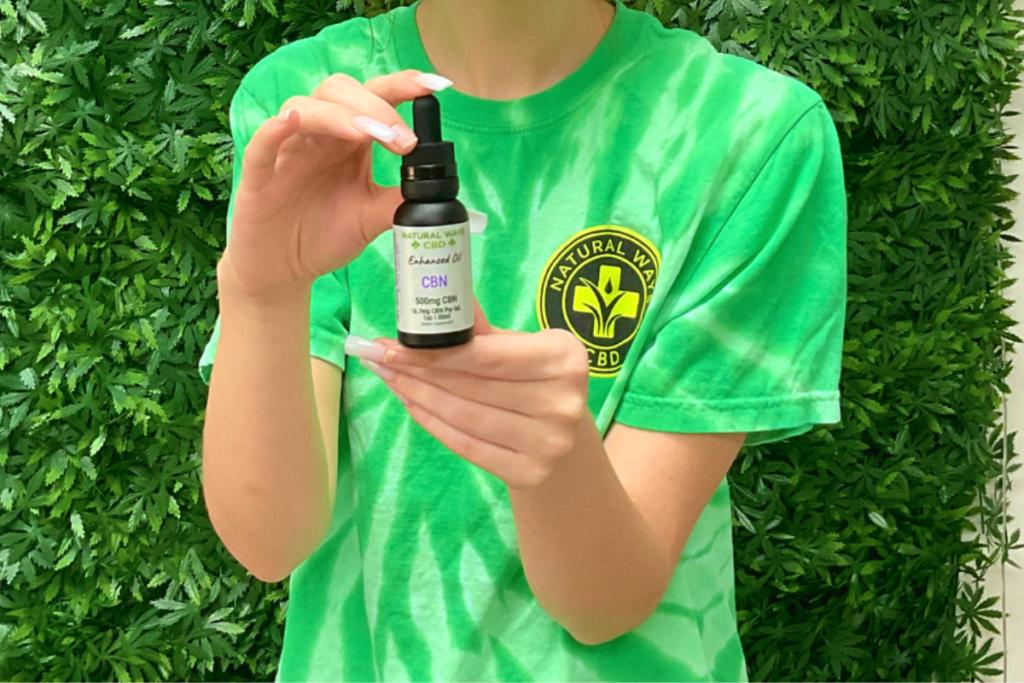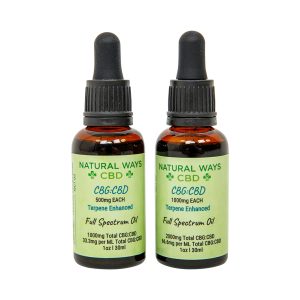Migraines are difficult, and the things you have to do to cope with them are often no easier. Resting in a quiet, dark room, trying to sleep, or applying a cool cloth to your head are all nearly impossible if you’re at work, on the road, or otherwise not at home.
If you’re on the lookout for a more convenient solution, you’ve probably been exploring hemp-derived cannabinoids – specifically, CBG (cannabigerol).
Research suggests CBG may offer therapeutic potential for physical discomfort, and there’s even been research done on its benefits for migraines.
In this article, we’ll explore that research and discuss how CBG can help with migraines. We’ll also talk about how it works, how it compares to CBD for this purpose, and how to use it.
What is CBG?
Cannabigerol (CBG), is a naturally-occurring cannabinoid in the hemp plant. Unlike CBD and THC, it’s considered a “minor” cannabinoid, as it’s only found in very small amounts.
But despite its small presence in hemp, CBG has major therapeutic benefits. It’s been researched for pain, inflammation, anxiety, and many other conditions, and many people swear by it for these uses and others.
Can CBG Help With Migraines? What Research Says
There is a bit of research on CBG for migraines, as well as studies investigating its use for pain and inflammation more generally.
Research on CBG for migraines
One study examined how well a blend of CBG and CBD (cannabidiol) works for neurological diseases, including migraine. Researchers concluded that CBG and CBD may be viable neuroprotective agents [1].
Other research suggests that CBG has anti-inflammatory and analgesic (pain-relieving) properties, both of which may directly help with discomfort from migraines [2].
Research on medical cannabis for migraines
Although not specific to CBG, there is quite a bit of research on medical cannabis for migraines. The cannabis plant, which contains over 100 cannabinoids, is widely thought by scientists to render pain relief.
Specific cannabinoids to which these benefits are often attributed are CBG, CBN, THC, and CBD. In other words, these cannabinoids may be largely responsible for the beneficial effects of the cannabis (considered hemp when it contains below 0.3% THC) plant on physical discomfort.
A review of 12 studies, which involved a collective 1,980 participants, found that medical cannabis “significantly reduced nausea and vomiting associated with migraine attacks after 6 months of use.”
The study also found that medical cannabis was 51% more effective at reducing migraines than non-cannabis products. The side effects weren’t too severe, either, with less than half of patients reporting adverse effects [3].
Of course, these results aren’t attributable to CBG alone – cannabinoids work best when you use them in combination.
However, given that some researchers have shown CBG itself to have analgesic and anti-inflammatory effects, it’s clear that it’s a major reason for the benefits of the cannabis plant for migraines.
Research on CBG for anxiety
While the causes of migraine typically reach far beyond mental health, stress and anxiety are common triggers for these painful headaches. Addressing these negative mental states, then, may reduce the number and intensity of migraines you experience.
Research suggests that CBG, especially when combined with CBD, has therapeutic potential for anxiety. CBG promotes uplifting, clarifying effects, but it won’t get you high.
Anecdotal evidence on CBG for migraines
There is also a lot of anecdotal evidence, or first-hand reports, from CBG users who have found it helpful for migraines. People often use it as a preventative, as well as use it during the actual bouts of migraine.
Many people refer to CBG as a “miracle cure” due to its powerful, yet non-inebriating, effects. While it’s not an FDA-approved medication and shouldn’t be used as one, many people find that CBG helps them stay comfortable throughout the day.
How CBG Works In Your Body
CBG, as with many other cannabinoids, works via your body’s endocannabinoid system (ECS).
The ECS is a receptor system responsible for regulating your vital functions, including your pain and inflammatory responses.
The ultimate purpose of the ECS is to keep your body and mind in a state of homeostasis, or balance. Healthy ECS function is associated with normal states of mental and physical wellness.
There are two main types of receptors in your ECS that cannabinoids interact with:
- CB1 receptors, which, when stimulated, render mental, or “head” effects
- CB2 receptors, which, when stimulated, render physical, or “body” effects
CBG binds to both types of receptors, which allows it to render mental and physical relaxation – unlike THC, it’s able to render uplifting, energizing effects without compromising your cognitive functioning.
CBG vs. CBD for Migraines
CBD (cannabidiol) is another vastly beneficial, naturally occurring hemp cannabinoid. Like CBG, it has potential benefits for pain and inflammation.
Anecdotal evidence suggests that CBG may be slightly more effective than CBD for migraines. This is due to the nature of the effects that each cannabinoid brings.
Whereas CBD is very subtle, and you won’t really “feel” it working (it works by reducing the negative, rather than adding the positive), CBG renders very noticeable physically soothing sensations.
When you’re in the middle of a painful migraine, you need something that you can feel working – that’s capable of addressing the discomfort while also promoting mental relaxation. As cannabinoids go, CBG is the best for this purpose.
However, CBD is still beneficial. It promotes full-body homeostasis, so it may be more useful for maintaining normal health states and keeping discomfort at bay then stopping it in its tracks.
It’s also true that CBG and CBD both work much better when taken in combination. And this doesn’t mean you have to take more cannabinoids; 5mg of CBG and 5mg of CBD is better than 10mg of either CBG or CBD.
The reason for this is that CBG and CBD work differently and have unique benefits; combining them gives you the best of both worlds. CBG is more energizing, while CBD is more relaxing; together, they can render greater physical comfort and a more balanced effect.

How to Use CBG for Migraines
When deciding which type of CBG product to use for migraines, we recommend considering the onset time, or how long it takes for a product to kick in.
Here’s a bit about different types of CBG products, along with onset time information for each:
- CBG Oil: CBG oil consists of hemp extract and carrier oil. Oils are taken under the tongue and absorbed into the blood vessels in the mouth, rather than swallowed. This gives them a quick onset; CBG oil begins working in just 10-15 minutes. Another benefit of oil products is that they allow for very precise dosing.
- CBG Edibles: CBG edibles, such as gummies, offer a fixed-dose consumption method. Because of this, they’re best if you plan to take the same amount of CBG each time. However, since they have to be digested, edibles take 45 minutes to 1 hour to begin rendering effects.
- CBG Capsules: CBG capsules offer an alternative to edibles. They’re quick, flavorless, and begin working in 45 minutes to 1 hour.
- CBG Inhalables: CBG flower and vape products are available online and at some CBD stores and dispensaries. Although inhaling CBG comes with the obvious health downside, flower and vapes begin working in just 5-10 minutes, as they deliver CBG to your bloodstream via the lungs.
CBG Dosage for Migraines
Whether you’re taking CBG as a preventative measure or you’re using it in the middle of a migraine, we recommend taking a medium-strength dose.
You can calculate your dose with this formula:
(0.3) x (your body weight in lbs.) = your daily CBG dosage in mg.
This provides a starting benchmark; once you’ve taken this dose a few times, adjust it gradually depending on how it’s working.
Additionally, if you’re using CBG for migraine prevention, consider splitting your dose up into many smaller doses and taking them throughout the day.
Conclusion: A Natural Supplement for Migraines?
Many people say CBG is a silver bullet for migraines. Some of our customers have even said it’s changed their life.
While we love hearing these stories, it’s important to understand that CBG won’t work the same for everyone– and more research needs to be done before CBG can be considered a reliable treatment for migraines.
Still, CBG tends to render a variety of benefits for this use case, so it’s likely that it can help you, too.
CBG for Migraines: Frequently Asked Questions
Here are some questions our customers frequently ask us about CBG for migraines.
Is CBG good for migraine?
Research and anecdotal evidence suggest that CBG offers neuroprotective benefits, and that it may help with pain from migraine headaches. However, more clinical research is needed.
Which cannabinoid is best for migraines?
CBG, THC, and CBD may all have physically relaxing effects and are commonly taken by people to manage discomfort from migraines. Choose CBG if you want a more energizing option, THC if you want something psychoactive, and CBD if you want a very balanced mental effect.
Is CBD or CBG better for pain relief?
Although CBD promotes mental relaxation and calming, CBG may be more effective for migraines since it creates noticeably uplifting, energizing effects in addition to addressing discomfort.
Is CBG good for headaches?
Yes, CBG may promote comfort and have benefits for managing headaches. However, CBG isn’t an FDA-approved treatment; if headaches are recurring, you need to seek the opinion of a medical professional.
What is CBG best used for?
CBG has many different benefits, but it’s most effective at promoting mental and physical relaxation for people dealing with inflammation, pain, and anxiety.
Sources
[1] di Giacomo V, Chiavaroli A, Recinella L, Orlando G, Cataldi A, Rapino M, Di Valerio V, Ronci M, Leone S, Brunetti L, Menghini L, Zengin G, Ak G, Abdallah HH, Ferrante C. Antioxidant and Neuroprotective Effects Induced by Cannabidiol and Cannabigerol in Rat CTX-TNA2 Astrocytes and Isolated Cortexes. Int J Mol Sci. 2020 May 18;21(10):3575. doi: 10.3390/ijms21103575. PMID: 32443623; PMCID: PMC7279038.
[2] Kogan NM, Lavi Y, Topping LM, Williams RO, McCann FE, Yekhtin Z, Feldmann M, Gallily R, Mechoulam R. Novel CBG Derivatives Can Reduce Inflammation, Pain and Obesity. Molecules. 2021 Sep 15;26(18):5601. doi: 10.3390/molecules26185601. PMID: 34577072; PMCID: PMC8467477.
[3] Okusanya BO, Lott BE, Ehiri J, McClelland J, Rosales C. Medical Cannabis for the Treatment of Migraine in Adults: A Review of the Evidence. Front Neurol. 2022 May 30;13:871187. doi: 10.3389/fneur.2022.871187. PMID: 35711271; PMCID: PMC9197380.



